Crassula ‘Dorothy’, also known as Crassula cv. ‘Dorothy’, is a small succulent plant that belongs to the Crassulaceae family. It is a hybrid of Crassula deceptor and Crassula suzannae, and its leaves are fleshy and triangular, growing in a rosette pattern. Her leaves are a beautiful minty-green color and have a red margin when stressed. Those little bumps on the leaves are normal and add to the many reasons why I love her so much. I recently had to pot mine up from a 2″ pot to a whopping 4″ pot after 4 years or so. It is that small!

How to Water Crassula ‘Dorothy’
When watering Crassula ‘Dorothy’, use room temperature water and water the soil directly, avoiding getting water on the leaves or stem. It’s important to allow the water to drain out of the pot completely to prevent standing water, which can lead to root rot.
You might also like: Root Rot in Succulents: How to Identify and Treat the Problem

During the hot summer months, Crassula ‘Dorothy’ may require more frequent watering due to increased evaporation. However, be cautious not to overwater, as too much water can cause the roots to rot. If the leaves begin to appear soft or mushy, it’s a sign of overwatering. In contrast, if the leaves begin to wrinkle and feel dry to the touch, it’s a sign of underwatering. In this case, it’s best to water Crassula ‘Dorothy’ and adjust the frequency of watering accordingly.
You might also like: How & When to Water Succulents So They Don’t Die
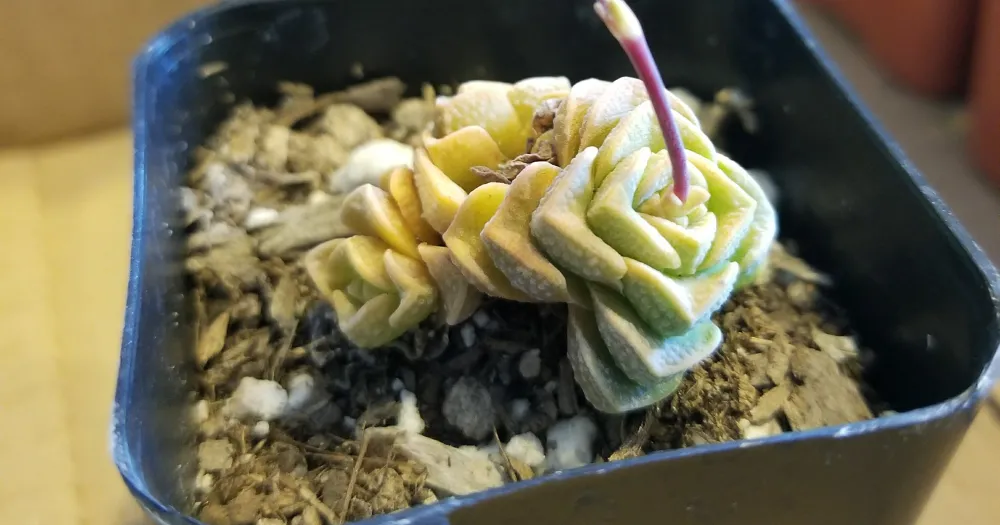
What Kind of Soil Does Crassula ‘Dorothy’ Need?
The soil for Crassula ‘Dorothy’ should also have good aeration to prevent water from pooling around the roots. Using a gritty, mostly inorganic cactus potting mix or making your own by mixing equal parts of regular potting soil, perlite, and coarse sand is a great option. The perlite and coarse sand help improve drainage and prevent the soil from becoming compacted.
You might also like: Succulent Soil: Ultimate Guide & 4 DIY Recipes to Keep Your Succulents Happy and Healthy

It’s also essential to choose a pot with drainage holes to prevent water from accumulating at the bottom of the pot. Crassula ‘Dorothy’ has a shallow root system, so it’s best to use a shallow pot or container. When repotting, gently remove Crassula ‘Dorothy’ from the old soil, trim any dead or rotted roots, and replant in fresh soil. It’s best to wait a week before watering after repotting to allow the roots to settle in the new soil.
You might also like: Drainage Hole at the Bottom of The Pot: Do Succulents Need Them? The Answer Might Completely Shock You!
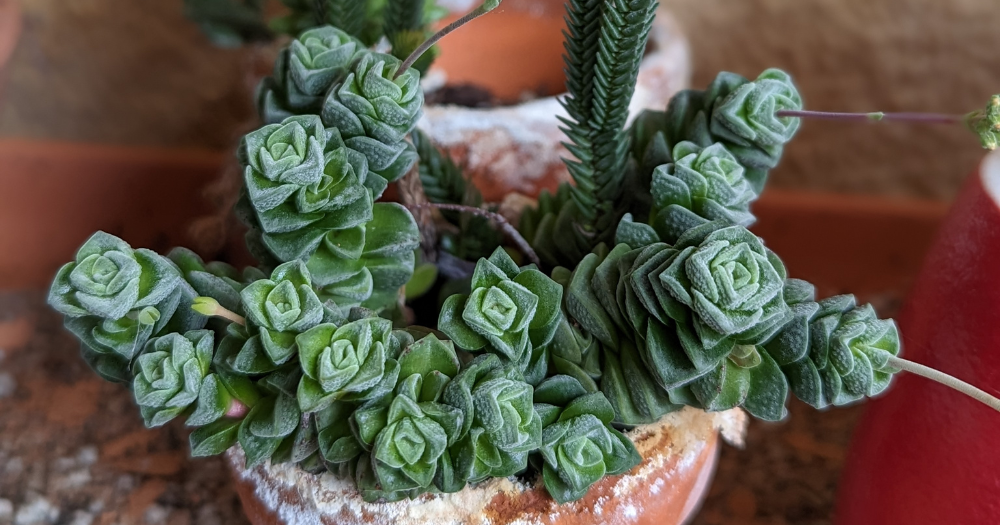
How to Propagate Crassula ‘Dorothy’
Propagation of Crassula ‘Dorothy’ is easy and straightforward, and the plant can be propagated through stem cuttings. The best time to take cuttings is during the active growing season, which is typically in spring or summer. To take a cutting, use a sharp, sterilized knife or scissors and cut a healthy stem from the parent plant. Make sure to choose a stem that is at least 2-3 inches long and has several sets of leaves.
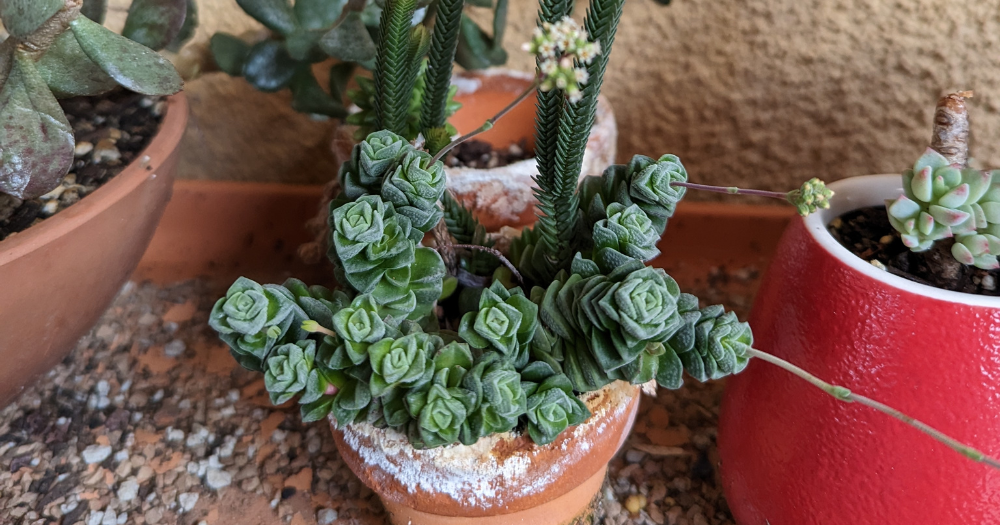
After taking the cutting, allow it to dry and callous over for a few days in a dry, warm location. This step is important to prevent the cutting from rotting once it’s planted. Once the cutting has calloused over, plant it in a well-draining soil mix that’s suitable for succulents. You can also dip the cut end of the stem in rooting hormone to encourage root growth.
You might also like: Propagating Succulents 4 Ways: The Best Guide Ever
Water the cutting sparingly until roots form. It’s important not to overwater Crassula ‘Dorothy’, as this can cause the cutting to rot before it has a chance to develop roots. Instead, mist the soil lightly or water it from the bottom to encourage the roots to grow deeper.

It may take several weeks or even months for the cutting to develop roots and begin to grow. During this time, make sure to keep the soil moist but not waterlogged, and protect the plant from direct sunlight or extreme temperatures. Once the cutting has established roots and started to grow, you can begin to water it more regularly and treat it like a mature Crassula ‘Dorothy’.
Lighting
If you’re keeping Crassula ‘Dorothy’ indoors, make sure to place it near a window that gets plenty of natural light, ideally a south or west-facing window. This will ensure that the plant receives at least 6 hours of sunlight daily, which is the minimum requirement for this species.

While Crassula ‘Dorothy’ thrives in bright light, it’s important to protect it from direct sunlight, especially during the hot summer months. Direct sunlight can cause the plant to become scorched, which can damage its leaves and prevent it from growing properly. To protect your plant from direct sunlight, you can use sheer curtains or window shades to diffuse the light. Another option is to move Crassula ‘Dorothy’ to a location where it can receive bright, indirect light, such as under a tree or on a covered patio.
You might also like: How Much Light Do Succulents Need? A Comprehensive Guide in 12 Parts
If you’re growing Crassula ‘Dorothy’ outdoors, it’s important to be mindful of the light conditions in your area. In regions with hot, dry climates, it may be necessary to provide some shade for the plant during the hottest part of the day. In areas with less intense sunlight, such as coastal regions, the plant may be able to tolerate more direct sunlight.
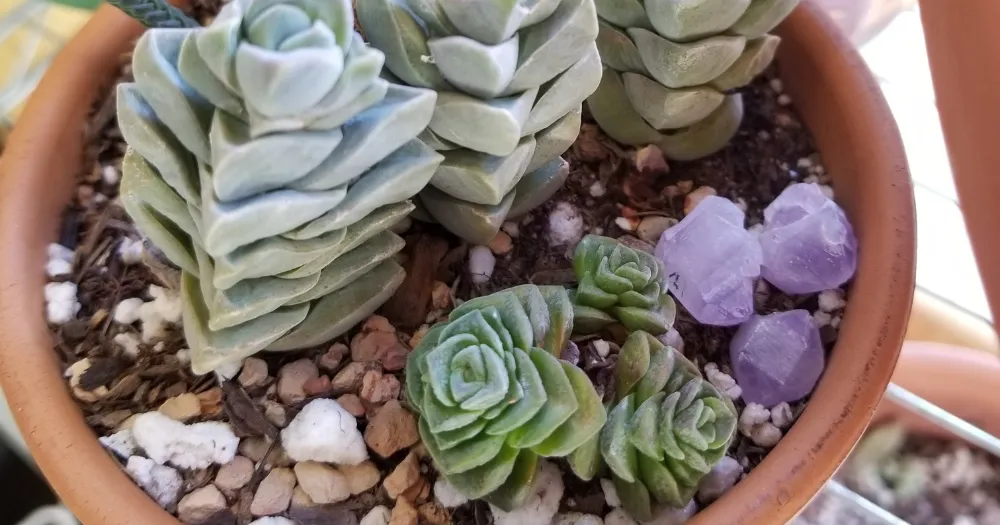
Fertilizer
Crassula ‘Dorothy’ doesn’t require much fertilizer. During the growing season, fertilize it once a month with a balanced, water-soluble fertilizer diluted to half strength.
You might also like: Succulent Fertilizer: The Ultimate Guide to Healthy Succulents + 8 DIY Fertilizer Recipes
Crassula ‘Dorothy’ Common Pests & Problems
Two of the most common issues that can affect Crassula ‘Dorothy’ are mealybugs and spider mites. These pests can cause damage to the plant by feeding on its sap, which can lead to stunted growth, yellowing leaves, and even death if left untreated. To combat these pests, it’s important to isolate the affected plant and treat it with an insecticidal soap or alcohol solution. This will help to kill the pests and prevent them from spreading to other plants.
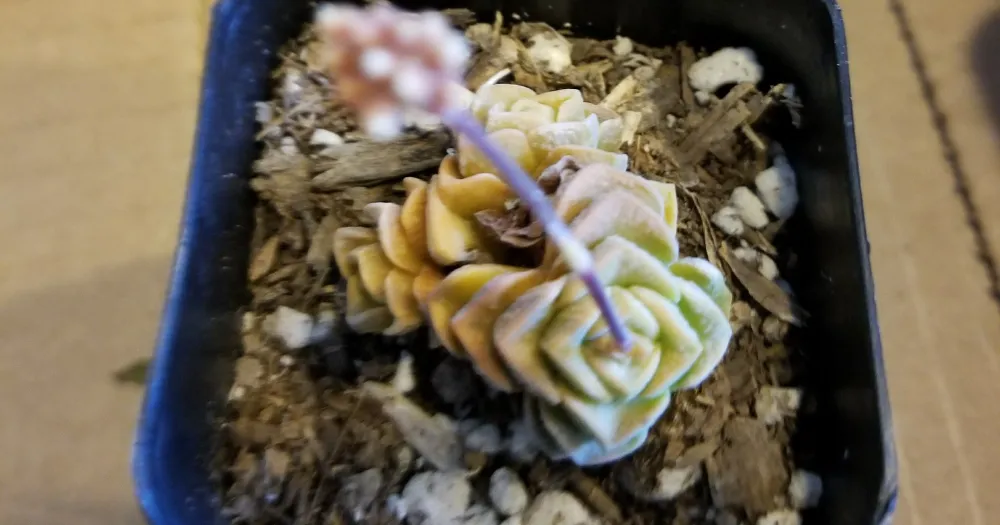
Another issue that can affect Crassula ‘Dorothy’ is overwatering or underwatering. Overwatering can cause the plant’s leaves to turn yellow and become mushy, while underwatering can cause the leaves to dry out and turn brown. To avoid these issues, it’s important to water the plant only when the soil has dried out completely. Crassula ‘Dorothy’ prefers well-draining soil, so make sure the pot has drainage holes to allow excess water to escape. In addition, avoid getting water on the leaves, as this can cause rot.
You might also like: How & When to Water Succulents So They Don’t Die
Finally, Crassula ‘Dorothy’ can also be affected by pests like scale insects and aphids, which can be treated with insecticidal soap or neem oil. Additionally, make sure the plant is getting enough light, as insufficient light can cause the plant to become leggy or lose its vibrant color.
Hardiness Zone & Temperature
Crassula ‘Dorothy’ is a resilient succulent that can withstand a range of temperatures. It is hardy in USDA zones 9b-11, which includes regions with mild winters and hot summers. These zones typically have winter temperatures that range from 25°F to 30°F (-4°C to -1°C). In areas where winters are harsher, it’s best to grow Crassula ‘Dorothy’ in containers so that it can be brought indoors during cold weather.
When it comes to temperature preferences, Crassula ‘Dorothy’ thrives in a range between 50°F to 80°F (10°C to 26°C). This makes it an ideal plant for indoor growing or for outdoor growing in areas with mild climates. When the temperature rises above 80°F (26°C), it’s best to provide some shade for ‘Dorothy’ to prevent its leaves from burning. Similarly, when the temperature drops below 50°F (10°C), it’s important to ensure Crassula ‘Dorothy’ is protected from frost.
You might also like: Succulent Care by Zones
To protect Crassula ‘Dorothy’ from cold weather, you can cover it with a frost cloth or move it to a sheltered location, such as a covered porch or greenhouse. During the winter months, it’s important to reduce watering to prevent the roots from becoming waterlogged, which can cause the plant to rot.

Where to Buy Succulents Online



